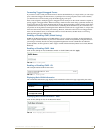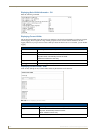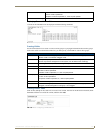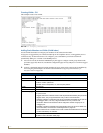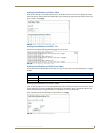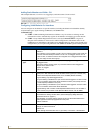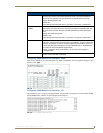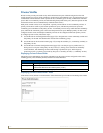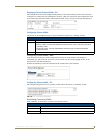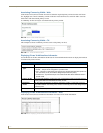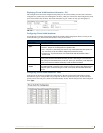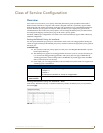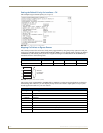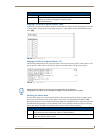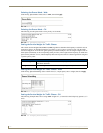
VLAN Configuration
133
NXA-ENET24 - Software Management Guide
Displaying Current Private VLANs - CLI
This example shows the switch configured with primary VLAN 5 and secondary VLAN 6. Port 3 has been
configured as a promiscuous port and mapped to VLAN 5, while ports 4 and 5 have been configured as a host
ports and are associated with VLAN 6. This means that traffic for port 4 and 5 can only pass through port 3.
Configuring Private VLANs
The Private VLAN Configuration page is used to create/remove primary or community VLANs.
Configuring Private VLANs - Web
Click Private VLAN, Private VLAN Configuration. Enter the VLAN ID number, select Primary or
Community type, then click Add. To remove a private VLAN from the switch, highlight an entry in the
Current list box and then click Remove.
Note that all member ports must be removed from the VLAN before it can be deleted.
Configuring Private VLANs - CLI
This example configures VLAN 5 as a primary VLAN, and VLAN 6 and 7 as community VLANs.
Associating Community VLANs
Each community VLAN must be associated with a primary VLAN.
FIG. 144 CLI - Private VLAN Information
Command Attributes
•VLAN ID: ID of configured VLAN (1-4094, no leading zeroes).
•Type: There are two types of VLANs within a private VLAN:
• Primary VLANs - Conveys traffic between promiscuous ports, and to community ports within
secondary VLANs.
• Community VLANs - Conveys traffic between community ports, and to their associated
promiscuous ports.
• Current: Displays a list of the currently configured VLANs.
FIG. 145
Web - Private VLAN Configuration
FIG. 146 CLI - Private VLAN Configuration
Command Attributes
• Primary VLAN ID: ID of primary VLAN (1-4094, no leading zeroes).
• Association: Community VLANs associated with the selected primary VLAN.
• Non-Association: Community VLANs not associated with the selected primary VLAN.



